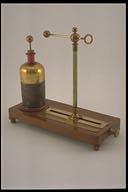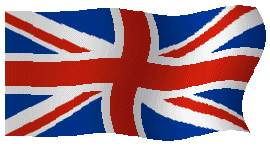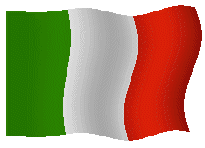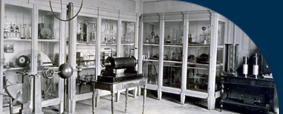
 |
Lane's micrometrical spark gap with Leyden jar |
 |
Spinterometro micrometrico di Lane con bottiglia di Leida |
| Subjects: electrostatics/charge reader in units of sparks |
Settore: elettrostatica/quantificatore in unità di scariche dell'elettricità della bottiglia |
| Inventory Number: 160 |
Numero di inventario: 160 |
| Engraved on the brass graduated-scale of the base: "Tecnomasio Milano" |
Sulla scala graduata d'ottone della base: "Tecnomasio Milano" [inciso] |
| c. 1870 |
Periodo di costruzione: 1870 circa |
| Mahogany, brass, glass, gold, tinfoil, shellac, sealing-wax |
Materiali utilizzati: Mogano, ottone, vetro, oro, stagnola, gommalacca, ceralacca |
| 405 X 160 X 360 [mm] |
Dimensioni: 405 x 160 x 360 [mm] |
| |
|
This instrument was invented in 1767 by the London chemist Timothy Lane (1743-1807). He had carried out electrical experiments since 1762, mainly for electrotherapeutic purposes. As he intended to give his patients appropriate and precise quantities of "electric fluid", he added, at a given distance from the primary conductor, which was connected with a Leyden jar of an electrostatic machine, an arm of a screw spark gap, which enabled the quantification of the amount of electricity to be administered to the patient, after having set the distance of explosion. The measurement was made by counting the number of sparks produced between the primary conductor and a brass ball, situated opposite it and the distance of which could be adjusted by means of a micrometer screw. Historically, this spark electrometer was one of the first instruments capable of giving an approximate measurement of the quantity of electric charge supplied by an electrostatic machine or by a Leyden jar. |
Questo apparecchio fu ideato nel 1767 dal farmacista londinese Timothy Lane (1743-1807). Questi, fin dal 1762, aveva iniziato esperimenti elettrici soprattutto per scopi elettromedicali. Nell'intento di fornire ai propri pazienti appropriate e precise quantità di "fluido elettrico", Lane aggiunse, ad una certa distanza dal conduttore primario (collegato ad una bottiglia di Leida) di una macchina elettrostatica, un braccio di spinterometro a vite che permetteva di quantificare, una volta fissata la distanza esplosiva, la quantità di elettricità da somministrare al paziente. La misura avveniva conteggiando il numero di scintille che si producevano tra il conduttore primario ed una pallina d'ottone ad esso affacciata, regolabile in distanza tramite una vite micrometrica. Storicamente, questo elettrometro a scintilla è da annoverare tra i primi strumenti idonei a fornire una misura approssimata ma quantitativa della carica elettrica erogata da una macchina elettrostatica o da una bottiglia di Leida. |
| |
|
Description: A small glass column with a mobile arm of a brass spark gap up on its top, and a Leyden jar are placed on a walnut base having small feet with rectangular section. The Leyden jar is laterally contained within a circular shelf and is externally covered: the bottom half by a layer of tin fool and the upper half by a thin film of golden shellac. It is internally filled with leaves of gold leaf that are electrically connected, through a metal chain, to a small brass sphere, on the cap of the jar. A second brass sphere supported by the arm of the spark gap, the distance of which from the former can be adjusted in two ways, first, it can be macroadjusted making the arm of the spark gap slide horizontally along a brass pommel with a hole, which is provided with a pressure screw for the blocking. Secondly, the distance between the two electrodes can also be microadjusted through the rotation of a brass screw, situated on one side of the base. The base controls a long rnicrometrical screw with a thread of one millimetre, which triggers the motion of the glass column supporting the arm of the spark gap along a horizontal groove of the instrument's base. The groove is entirely coated with brass and is provided laterally with a fixed scale, which is engraved with millimetrical marks and is twenty cm. long. A brass slider that can run along it rigidly fixed to the base of the glass column and presents an engraved nonius scale, for measuring movements 1/10 of a millimeter long. |
Descrizione: su una base in noce con piedini a sezione rettangolare sono posizionati una colonnina di vetro portante sulla sua sommità un braccio di spinterometro mobile in ottone e una bottiglia di Leida. La bottiglia, che è alloggiata lateralmente entro uno apposito scomparto circolare, è esternamente ricoperta per metà di uno strato di carta stagnola e per l'altra metà di una sottile pellicola dorata di gommalacca; internamente essa è riempita di foglioline d'oro connesse elettricamente, tramite una catena metallica, ad una sferetta d'ottone posta sul tappo della bottiglia. Una seconda sferetta d'ottone portata dal braccio dello spinterometro è doppiamente regolabile in distanza rispetto alla prima; essa può essere macroregolata in distanza, dapprima facendo scorrere orizzontalmente il braccio dello spinterometro lungo un pomello d'ottone forato, dotato di una vite a pressione per il bloccaggio, quindi microregolando la distanza tra i due elettrodi tramite la rotazione di una vite d'ottone, posta su un lato della base. Questa comanda una lunga vite micrometrica, con passo di un millimetro, che mette in movimento, lungo una scanalatura longitudinale della base, la colonnina di vetro che sostiene il braccio spinterometrico. La scanalatura, interamente rivestita d'ottone, è munita lateralmente di una scala fissa, incisa con tacche millimetriche e lunga venti centimetri. Su di essa può scorrere, rigidamente connesso alla base della colonnina di vetro, un cursore d'ottone su cui è incisa la scala del nonio che permette di apprezzare spostamenti del decimo di millimetro. |
| |
|
Function: The external armature of the jar is electrically connected (for example with a metal wire) with the brass ring of the arm of the spark gap. By charging the jar and adjusting the distance of the spark gap, it is possible to determine approximately with arbitrary units (which depend on the distance selected and on other factors) the quantity of electricity present in the jar according to the number of sparks that are produced between the electrodes. |
Funzionamento: si connette elettricamente (ad esempio con un filo metallico) l'armatura esterna della bottiglia con l'anello d'ottone del braccio spinterometrico. Caricando la bottiglia e regolando la distanza dello spinterometro, è possibile determinare approssimativamente in unità arbitrarie (dipendenti dalla distanza scelta e da altri fattori al contorno) la quantità di elettricità presente nella bottiglia in base al numero di scintille che scoccano tra gli elettrodi. |
| |
|
Bibliography: Lane [1767], Vol. 57, part 1, pp. 451-460; Tecnomasio [c. 1873], p. 77, nº 990, Hackmann [1978], 3rd year, part 2, p. 43. |
Bibliografia: Lane [1768], Vol. LVII, Part I, pp. 451-460; Tecnomasio [1873 circa], p. 77, num. 990; Hackmann [1978], Anno III, fasc. 2, p. 43. |
|
|

